The Intel Xeon E3-1225 V6 is our pick for a low-end Intel Xeon E3-1200 V6 CPU. Like the Intel Xeon E3-1220 V6 we reviewed, it lacks Intel Hyper-Threading which means it is only a 4 core/ 4 thread part. It does have two key advantages over its lower end sibling that make it worth a $20 upgrade.
First, it has an integrated GPU. If you are using these chips in low-end workstations, then that will more than justify a $20 price increment in terms of not having to buy a PCIe GPU, not using the slot, and cost of the GPU.
Second, clock speeds (base and turbo) are increased by about 10% to 3.3GHz and 3.7GHz respectively. In this article, we are going to see how that speed bump impacts performance compared to the Intel Xeon E3-1220 V6 but also other CPUs in this performance range.
Test Configuration
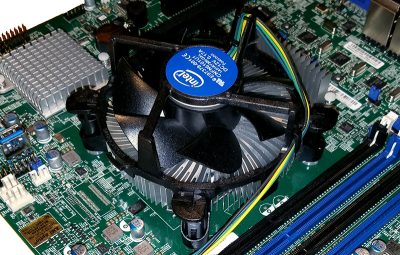
For this setup, we used what we would expect to be a fairly typical server:
- CPU: Intel Xeon E3-1225 V6
- Motherboard: Supermicro X11SSH-F
- RAM: 2x 16GB ECC DDR4-2400 (Crucial)
- SSD: Intel DC S3710 400GB
- OS: Ubuntu 14.04.5 LTS (performance benchmarks), Ubuntu 16.04.2 LTS, VMware ESXi 6.5, Centos 7.3
We did want to take a moment and discuss some of the comparison data we are going to use. We do have the entire AMD Ryzen SKU stack to data along with the entire Xeon E3-1200 V6 range’s CPU core/ clock variants. We also have some legacy data points to give additional perspective.
The Ryzen comparison is tough. Although it supports ECC memory on the CPU, we still are not seeing enough software maturity to call it a stable server platform. In addition, there are great workstation platforms but no real server platforms at the time of this writing. If you want a server, you want E3-1200 V6. If you are building a workstation with a NVIDIA or AMD GPU, Ryzen is certainly a competitor. If you are utilizing an onboard GPU, then the Intel Xeon E3-1225 V6 has an enormous advantage as you get a GPU without using a PCIe slot and PCIe device power.
We have the Intel Core i7-7700 and i7-7700K chips in the comparison as well. Although many vendors will say workstations absolutely require ECC memory, there are plenty of customers who will trade ECC memory for 25% more performance.
Intel Xeon E3-1225 V6 Benchmarks
For our testing, we are using Linux-Bench scripts which help us see cross platform “least common denominator” results. We are using gcc due to its ubiquity as a default compiler. One can see details of each benchmark here. We are likely going to update the Linux-Bench in the near future with a few new tests as well as an even simpler to use/ faster revision, but for now, we are using the legacy version that now has over 100,000 test runs under its belt.
Python Linux 4.4.2 Kernel Compile Benchmark
This is one of the most requested benchmarks for STH over the past few years. The task was simple, we have a standard configuration file, the Linux 4.4.2 kernel from kernel.org, and make utilizing every thread in the system. We are expressing results in terms of compiles per hour to make the results easier to read.
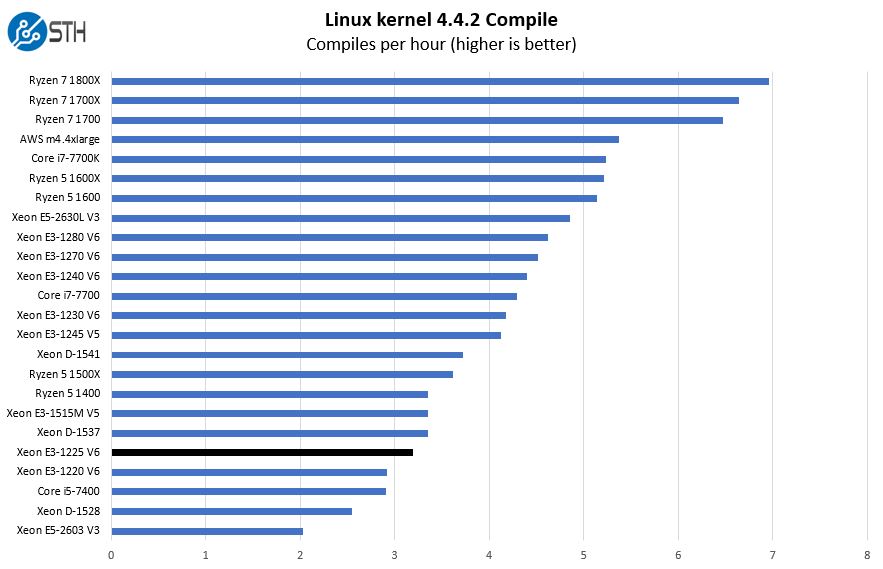
As you can see, the Intel Xeon E3-1225 V6 struggles without hyper-threading. It does have a fairly significant performance advantage over the no-GPU Xeon E3-1220 V6.
c-ray 1.1 Performance
We have been using c-ray for our performance testing for years now. It is a ray tracing benchmark that is extremely popular to show differences in processors under multi-threaded workloads.
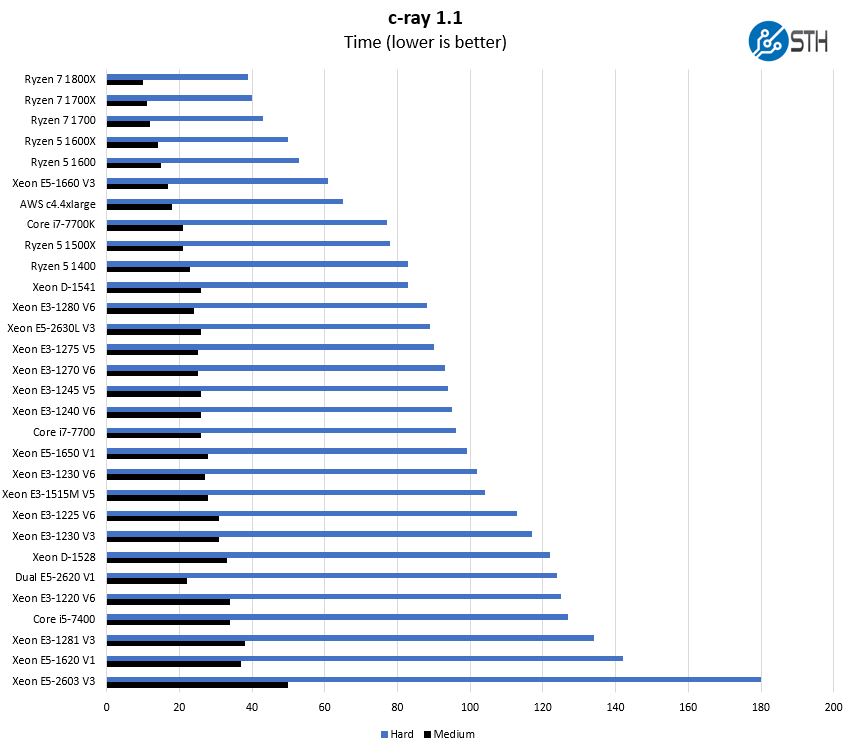
Here again, we can see that the V6 part benefits from a higher clock speed over the Intel Xeon E3-1220 V6. Compared to the Intel Xeon E3-1230 V6, it is still behind.
7-zip Compression Performance
7-zip is a widely used compression/ decompression program that works cross platform. We started using the program during our early days with Windows testing. It is now part of Linux-Bench.
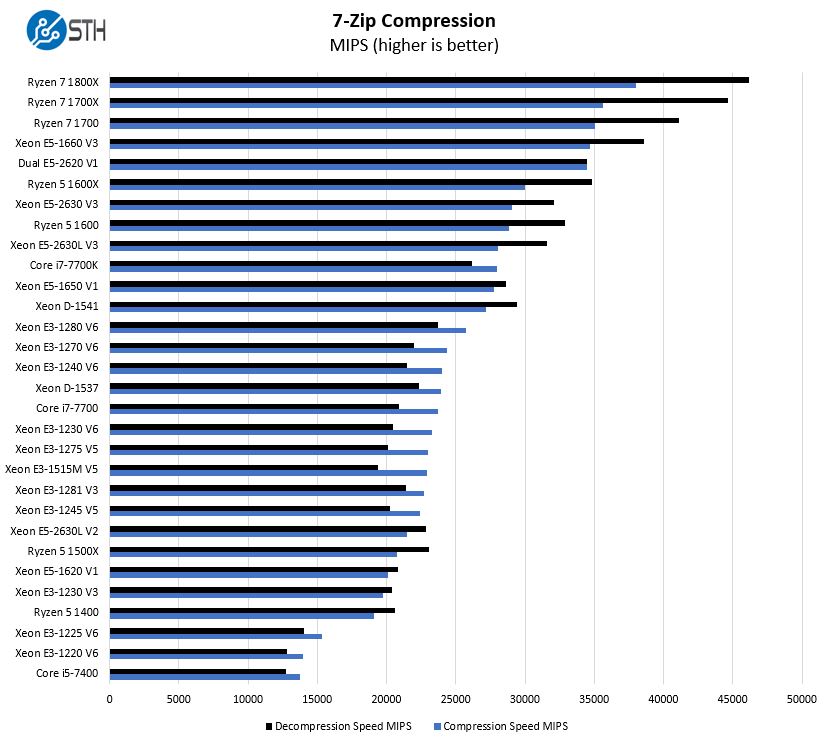
In terms of compression workloads, the lack of hyper-threading is hurting the CPU.
NAMD Performance
NAMD is a molecular modeling benchmark developed by the Theoretical and Computational Biophysics Group in the Beckman Institute for Advanced Science and Technology at the University of Illinois at Urbana-Champaign. More information on the benchmark can be found here. We may replace this or augment with GROMACS in the next-generation Linux-Bench as that test is currently running through regressions.
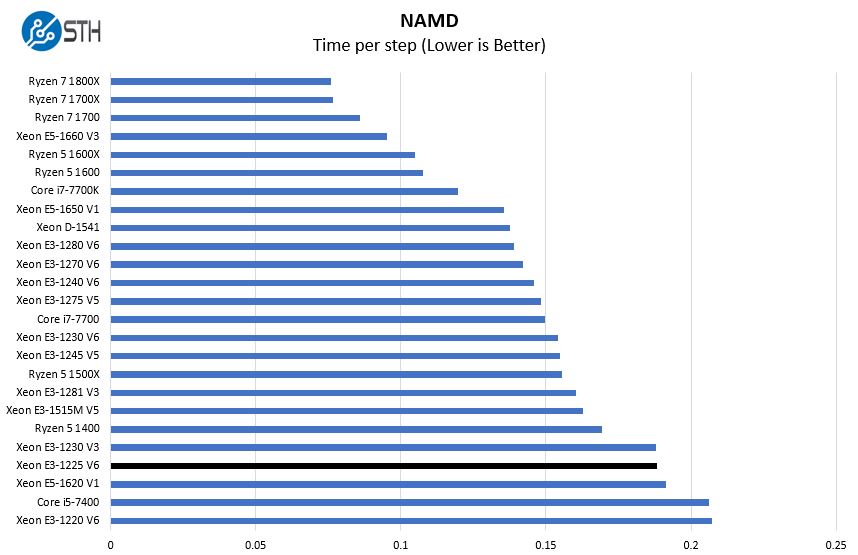
NAMD performance shows us that even lacking hyper-threading the Intel Xeon E3-1225 V6 can compete with the Intel Xeon E3-1230 V3 which is three generations older and one SKU increment up the stack.
Sysbench CPU test
Sysbench is another one of those widely used Linux benchmarks. We specifically are using the CPU test, not the OLTP test that we use for some storage testing.
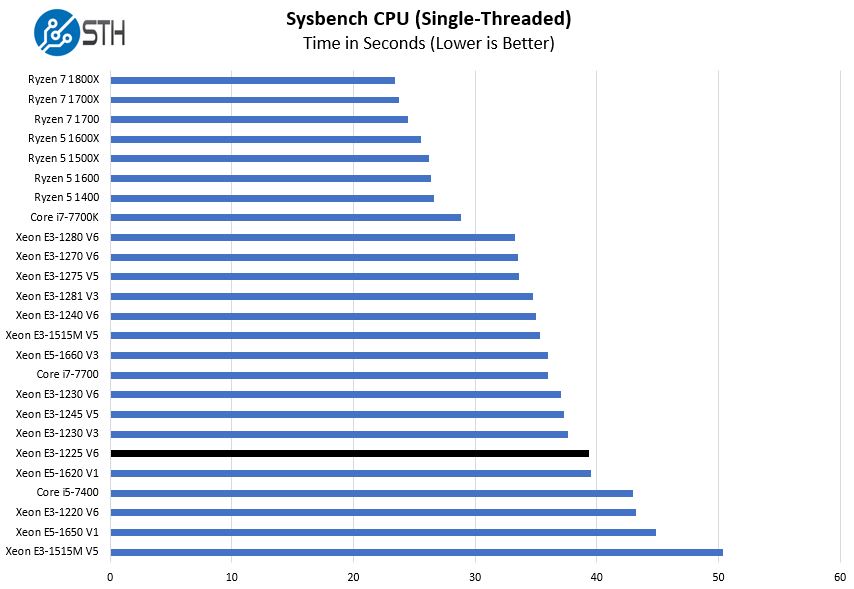
Here we see the higher clock speeds push the chip past the Intel Xeon E3-1220 V6 by a significant margin.
OpenSSL Performance
OpenSSL is widely used to secure communications between servers. This is an important protocol in many server stacks. We first look at our sign tests:
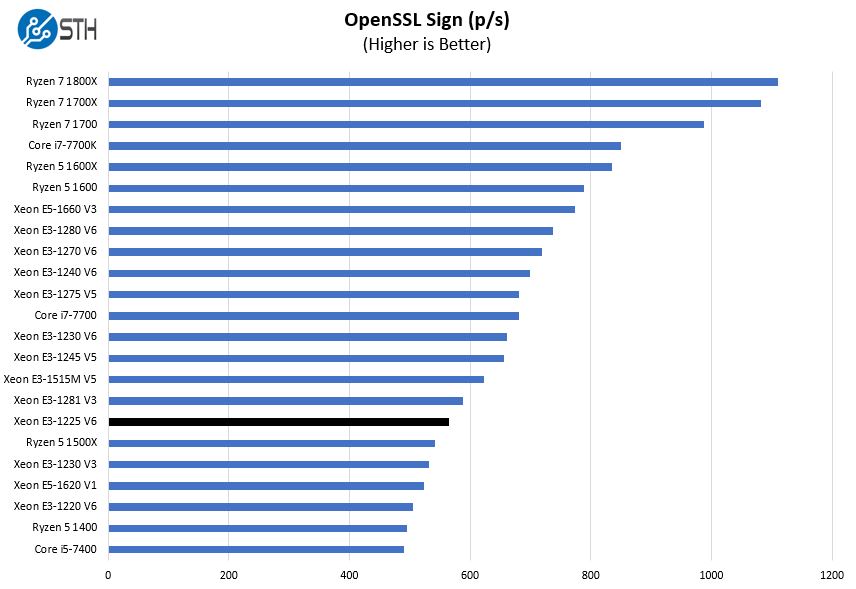
And our verify tests:
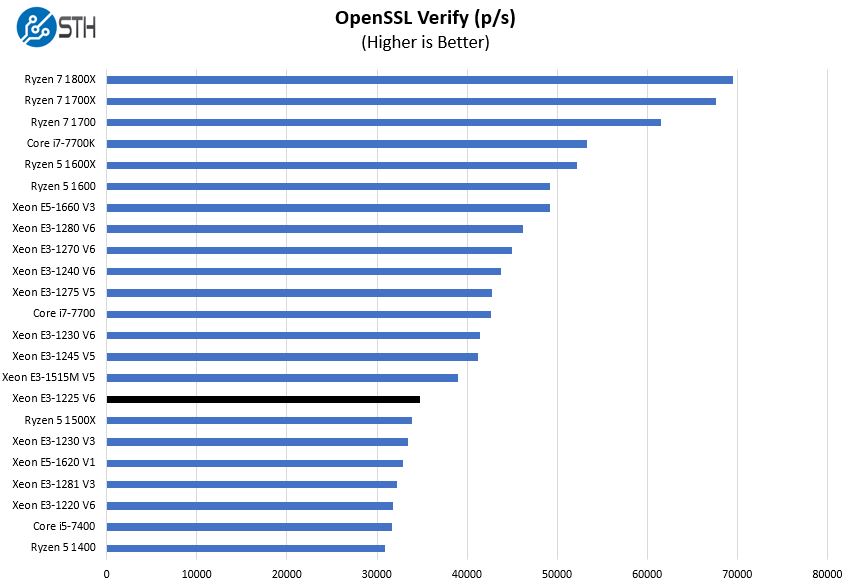
It is interesting to note that we see this chip outperform the AMD Ryzen 1500X, a high-clocked 4C/ 8T part from AMD, even without the benefits of Hyper-Threading.
UnixBench Dhrystone 2 and Whetstone Benchmarks
One of our longest running tests is the venerable UnixBench 5.1.3 Dhrystone 2 and Whetstone results. They are certainly aging, however, we constantly get requests for them, and many angry notes when we leave them out. UnixBench is widely used so it is a good comparison point.
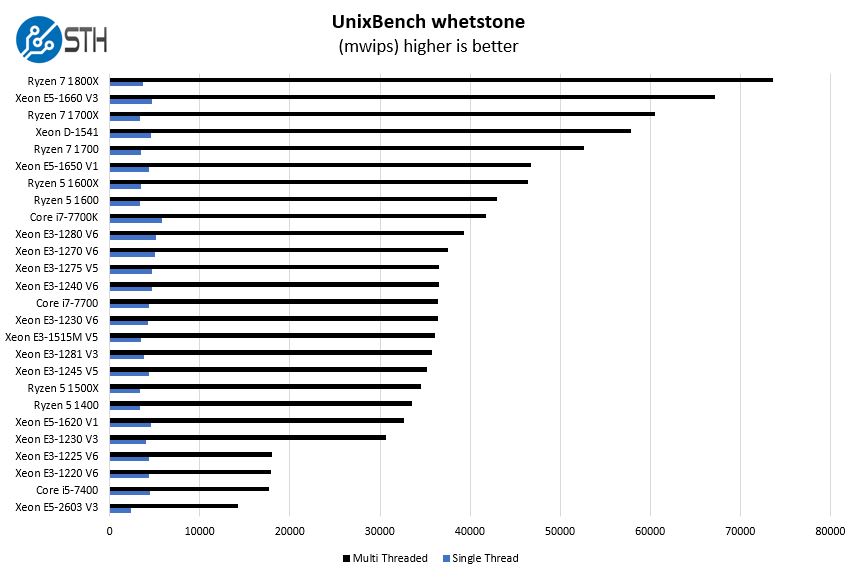
In terms of raw compute, the lack of hyper-threading hurts the Xeon E3-1225 V6.
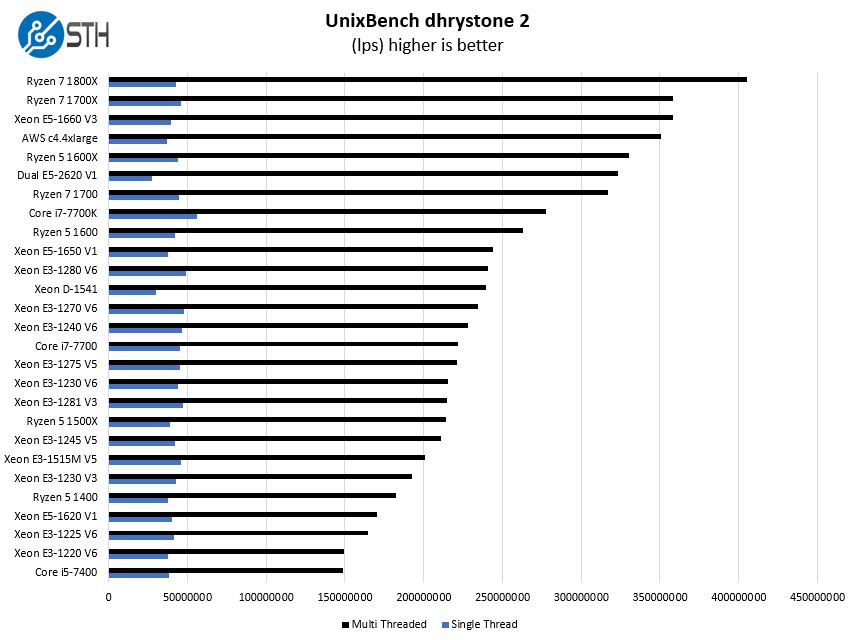
In terms of single thread performance, the Xeon E3-1225 V6 is very competitive.
Final Words
Unless you are going for rock bottom pricing, the Intel Xeon E3-1225 V6 gets our nod over the Intel Xeon E3-1220 V6. The addition of the GPU can be useful in some scenarios, especially if you are using it for QuickSync video encoding or a similar function. In this generation, you not only get the GPU, but a fairly significant speed bump which is important given the lack of hyper-threading.

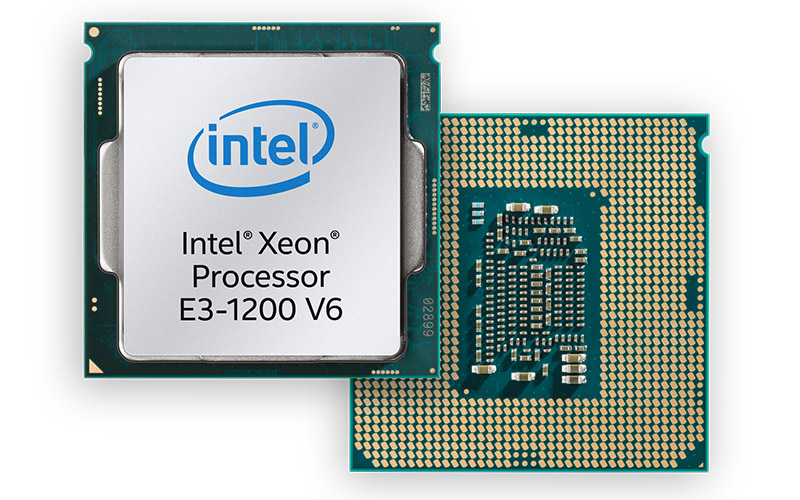



Do these cpus work in motherboards with chipsets like H110, H170, B150, Q150, Q170 after the bios update to support Kaby lake? Xeon E3-1200 v5 were blocked but heard Xeon E3-1200 v6 may work in desktop boards. Any ideas? Do you guys get time to test them on desktop boards?